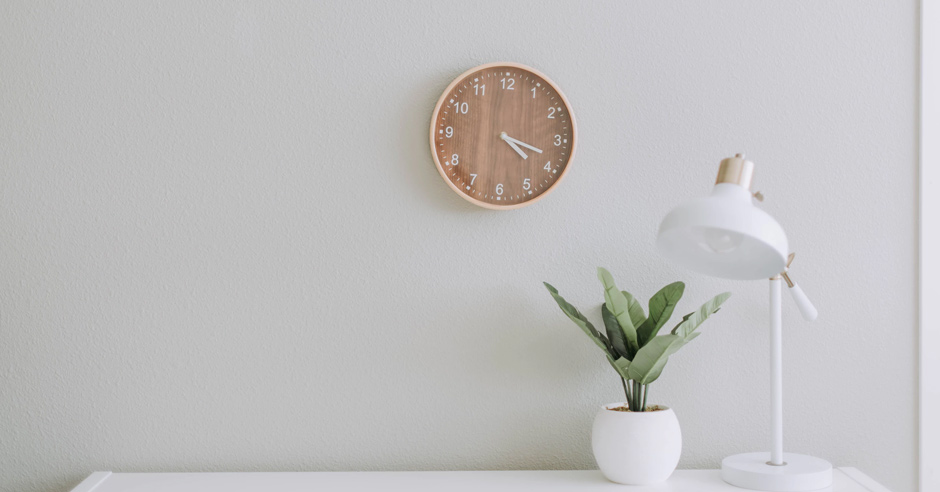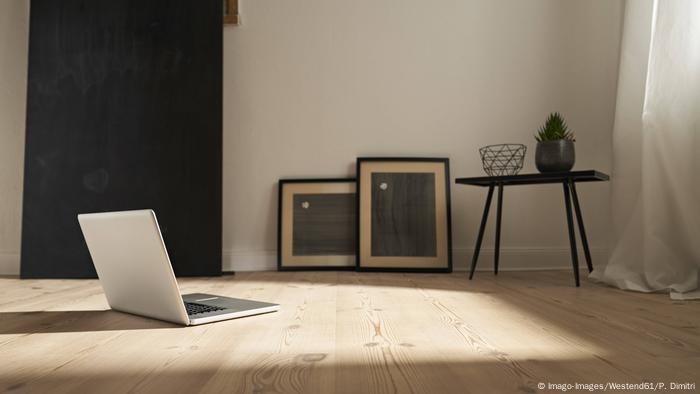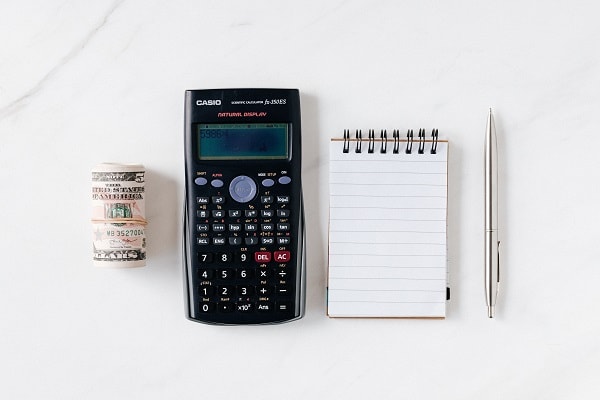Welcome to this post about everything you need to know about minimalism in 2022!
Minimalism is a concept that has been gaining much popularity over time, so I thought it was about time to write a blog on what minimalism is. I have always heard about a minimalist aesthetic, a minimalist room, and more. But, until a couple of days ago, I never realized that it was a way of living, a lifestyle. Whenever someone said the word “minimalism,” I would always visualize a simple room with a white wall and a flower (hence, the cover image for this article.) So, while that does sort of represent what minimalism is, it also, in a sense, does not.
As said by Joshua Becker of Becoming Minimalist, “Minimalism is the intentional promotion of the things we most value and the removal of anything that distracts us from it.” To further expand, “Minimalism is a tool that can assist you in finding freedom. Freedom from fear. Freedom from worry. Freedom from overwhelm. Freedom from guilt. Freedom from depression. Freedom from the trappings of the consumer culture we’ve built our lives around. Real freedom.” (theminimalists)
Hopefully, by now, you’ve understood that minimalism is not something you can accomplish by redesigning your room a certain way and adding a pot of leaves. It’s about clearing out unnecessary items in your life and focusing on what’s important, so you can find happiness, fulfillment, and freedom. As teenagers, we tend to get carried away by things that are not permanent and not important. For example, worrying because of one bad test score, getting jealous because of one person’s Instagram post, and more. Life is much more than that, and minimalism can help us realize that.
If there is one phrase that minimalism shouts, it would be, “Less is more!”
Finding your Own Version of a Minimalist Lifestyle

Based on the definition and information provided above, YOU get to choose what to make of it! Minimalism will look different to everyone; if you ask 100 people to show you what minimalism looks like, you will get 100 different pictures. Each individual values different things in life, and each of these are personal and unique to us. One of the awesome aspects of minimalism is that you get to create whatever version of minimalism works for you. That being said, it is helpful to look at the inspiration of other people’s ideas of minimalism to find your own one. Keep reading to learn about the benefits of it, what it is NOT, how to start, financial minimalism, and more!
The Benefits and Challenges of Minimalism

Before we start with how to get started and what you can do, it’s helpful to look at the benefits and challenges of it to see if this is something that actually adds value to your life. By understanding the benefits, you can see if this is something you really want to do and if so, motivate yourself to start. And, by understanding the challenges, you can prepare yourself for what’s to come and realize that while the process might be hard to start, it will be worth it considering the benefits.
Benefits
- Less stress
- More time
- More possibilities
- Eliminate discontent
- Live in the moment
- Pursue our passions
- Discover our missions
- Experience real freedom
- Create more, consume less
- Focus on our health
- Grow as individuals
- Contribute beyond ourselves
- Rid ourselves of excess stuff
- Discover purpose in our lives
Challenges
- Things often get worse before they get better
- People in your life may not understand
- There’s regular maintenance involved
- You’ll soon realize that minimalism is not the magic answer, nor it is the end goal.
- The purging never seems to end. They’ll always be things you can get rid of.
What it is NOT

There are a lot of misconceptions people have about adopting a minimalist lifestyle. There is not only one answer to the question, “What is minimalism?,” so rather than trying to figure out what minimalism exactly is, it is helpful to learn what minimalism is not. This can help you have a clearer understanding and vision of how you want your style of minimalism to look like. Here are five misconceptions and myths about minimalism:
1. Minimalism is getting rid of everything you own
It’s true that a big part of minimalism is removing things from your life. But the focus of minimalism shouldn’t be on what you are getting rid of. The focus should be on what you GAIN by letting go of the things that don’t bring value to your life.
Instead of focusing on what you’re getting rid of, focus on what minimalism gives you more of. More time, more space, more peace, more freedom.
Minimalism is not about deprivation. It is about intentionally choosing to live with less in order to have more time and space for what is most important in your life.
https://simplelionheartlife.com/what-is-minimalism/
2. Minimalism and frugality are the same thing
To be clear, frugality is about spending carefully and looking for opportunities to save money. Sure, minimalism can lead you to spend more carefully and save money by shopping more intentionally, but frugality is not the main purpose of minimalism.
There is definitely some overlap between these two concepts, as they both promote more consciousness on how you spend your money. And, some people may even turn towards minimalism in an effort to be more frugal. But, minimalism goes beyond having less items just for the purpose of saving money. Minimalism is about living with less to have the time and space for the more important things in your life.
3. Minimalism is so restrictive, it makes life harder
People believe that because you are living with fewer things, it makes your life harder. They think that you have to get rid of things that are convenient for you, so it prevents you from living an easier life. However, this is totally not true. When you follow a minimalist lifestyle, you get rid of things that you don’t actually need and are just cluttering your living space. And by that, it makes your life easier because you spend less time looking for something, cleaning, organizing, etc.
4. Minimalism means stark, all-white rooms that look cold and uninviting
While there is a minimalist design aesthetic, often characterized by all-white rooms with little furniture or décor, that doesn’t mean that’s the ONLY way minimalism can look.
It’s important to understand that minimalism doesn’t have to look a certain way at all; it’s about making it unique and personal to your style. Your room could have colorful blankets, books, pillows, and more, and still be minimal! Minimalism is when the only things you keep in your space are those that you use often and/or love. Minimalism is about finding the right amount of stuff for you, and the key is to only keep what adds value to your life and removing the rest.
5. Minimalism only applies to your stuff
Getting rid of excess stuff in your life is a big part of minimalism, but “stuff” is only one part of minimalism. Your stuff doesn’t just refer to the things in your room, but your mindset, your hobbies, what you consume, and more. In order to become a minimalist, you must first shift your mindset and learn to challenge and change your relationship with what you own and why you own it.
As Brian Gardner, founder of No Sidebar says:
“I’ve learned that minimalism is not about what you own, it’s about why you own it.”
Minimalism goes far beyond your stuff, and it extends to all areas of your life.
How to Get Started

After reading all about what minimalism is and what it means in the beginning of this article, you can decide whether or not you want to try adopting a minimalist lifestyle. If you do, here’s how to start!
1. Do some research
While this article did explain the basics of minimalism, there are so many more resources that go in much more depth about what you should do and what it really means. Scroll down to the end of this article to view them!
2. Reflect on your possessions
In order to start living a more minimal life, you should reflect on what you own, not just the things you bought, but also your relationships and mindset. This is not just an exercise in awareness of your material wealth, but the wealth of your whole being. By doing this, you can determine what you appreciate and separate what you have into what is important, what you need, and what you need to let go of.
3. Write it down
Make a list of all the reasons you want to live more simply. If you are sick of debt collectors, write it down. Mad that you never get any time with your kids? Write it down. To stressed out to sleep at night? Put it on paper. Want to fire your boss? Yep, write that down too. These are your whys and your whys will provide great leverage when you think it’s too hard to keep going. Your whys will help you remember what matters.
https://bemorewithless.com/begin/
4. Set goals
The purpose of minimalism is to help you achieve a happier life. And, in order to do this, you must set goals on what you want to change and improve on. This can be anything from decreasing traveling or excessive spending to better your career or meet your personal goals.
5. Stop making excuses
“A minimalist lifestyle has downsides. It requires enough self-discipline and honesty to analyze items that offer no value beyond a purely aesthetic one. Luxuries and other excesses are to be avoided if they do not help serve a purpose. This can prove to be a challenge particularly for a person who is full of excuses.” (conserve-energy-future.com)
6. Make plans
Creating a plan for your future is the best way to achieve your goals and adapt to your new lifestyle.
7. Declutter your things AND your mind!
Minimalism is all about living with only the things you need, so start by getting rid of things you don’t need in your living space. Along with this, you must also declutter your mind to clean up your mental space and ensuring that your mental state reflects your personal space!
More
- Spend less time on social media
- Digitize to save space
- Eat simple and healthy food
- Create a savings account
- Choose quality over quantity
- Shop only for essentials
- Enjoy the journey!
Habits You Can Adopt

After you’ve gotten used to the lifestyle of a minimalist, it’s helpful to adopt these minimal habits so that you can improve your life and your daily routine. Here are 6 out of many habits that you can follow as a minimalist:
1. Declutter daily
A huge part of minimalism is decluttering and cleaning so that you can have more space, time, and freedom. If you see something you don’t need, get rid of it! If you see something that it dirty or messy, clean it up! Try to keep the surfaces clear and create space so that you can embrace your surroundings.
2. Say no
Along with decluttering, being intentional with your resources (a.k.a time & items) is one of the main purposes of being a minimalist. So, if someone offers you something that you don’t really need, get used to saying “No, thank you.” Also, if someone asks you to do something for him/her or go somewhere with him/her but you don’t really want to, it’s totally fine to decline the favor/offer! Know that your time is entirely up to what you want to do.
3. Make wise spending choices
As obvious as it is, this habit relates to finances and if you would like to learn more about financial minimalism, scroll down to the section after guidelines! Avoid impulse buys and be conscious of what you are buying and if it will make a positive impact in your life. It helps to use what you already have instead of buying things you don’t need.
4. Collect memories
Minimalism is all about living a more happy and purposeful life. And as we all know, experiences are worth more than materialistic things. Memories will last, but not items. As an example, you will remember the trip you took with your friends 5 years ago, but not what clothes you owned back then. If you become a minimalist, always remember to collect memories, not things.
5. One-minute rule
This one is pretty simple: If you can do a task in less than or around one minute, then do it! Don’t procrastinate or wait to do it another time because you might forget.
6. Practice gratitude
A major part of the minimalist mindset is to simply be grateful for what we already have. It’s not just about materialism and consumerism and wanting more and more, it’s about taking stock of what we have (which happens when we declutter), being grateful for the things that make us happy and being grateful for where we are in life.
Adding gratitude into your day is a habit that can help you to bring focus back to what is important. You don’t have to be grateful for ‘things’ you can show gratitude for anything in your life that you are simply grateful for.
https://projecthotmess.com/habits-of-minimalist-living/
Guidelines

So while minimalism is exactly how you want it to be, there are a couple of guidelines that can help you achieve your vision of minimalism. Of course, you can modify these or change them to what works best for you, as your lifestyle is entirely what you want to make of it!
- It doesn’t need to cost any money
- The process is dynamic, not static
- Declutter first, organize second
- There are no magical number of items you need to have or get rid of
- Detach your sense of self-worth from things you own
- . Build your decision muscle
- It’s not about having an easier life
Check out each guideline explained in more depth at breakthetwitch.com!
Financial Minimalism

This blog is called TeenFinancialFreedom, so I obviously couldn’t forget about the financial aspects of minimalism. Yeah, that’s right; minimalism also applies to finances! Financial minimalism is about making intentional choices with your money that align with your values. Some ways financial minimalism can help you achieve financial freedom is because it allows you to prioritize your spending, limits the need for things, gives you focus on your budget and financial goals, helps you find ways to simplify your spending, and makes giving easier! All of these can help you get out of debt, save money, and build wealth. It all starts with cutting down on your spending, knowing where your money goes, and creating a budget!
Resources

Check out these insightful websites that dive much deeper into the different aspects of minimalism and what you can to become one!
- Article: 8 Things I learned Through Minimalism
- Article: A Beginner’s Guide to Minimalism
- Video: Minimalist Morning Routine
- Video: 10 Minimalist Habits that will Transform your Life
- Article: 10 Minimalist Challenges
Minimalism is a tool, not an end goal
Before I finish this blog, I wanted to elaborate on one last point; minimalism is a tool, not an end goal. “It is a tool that can help you create the life you want and give yourself the freedom to live that life. It’s a tool to help you live intentionally, so you can focus your time, space, energy and attention on what matters most to you.” (simplelionheartlife.com)
Once you have mastered the life of a minimalist according to your standards, you didn’t achieve the purpose of your life. The lifestyle of a minimalist is bigger than just having less, it’s about living life the way you want to, and minimalism helps you achieve that!
The Takeaway
That’s it for this post on minimalism! Just remember that minimalism is what you want it to be, not how others see it. Speaking of which, if you have any opinions on what minimalism is for you, comment down below. I hope this post taught you something new, and good luck on your journey!
